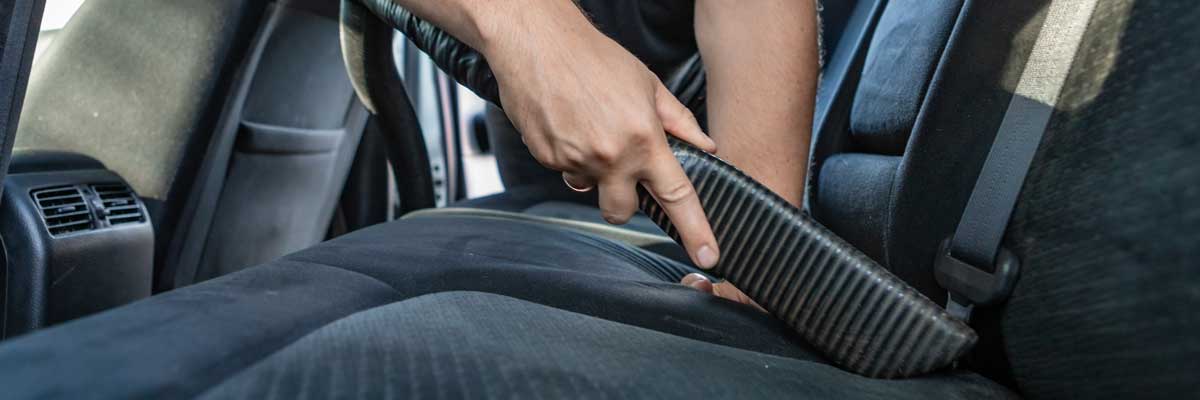A First-Time Car Buyer Guide for New or Used Vehicles
October 19, 2020
Next to your mortgage or rent, your vehicle is likely your second-largest expense — and it’s one that you don’t want to get wrong. Your first time buying a car may bring a lot of uncertainty, especially when you don’t have the experience to draw on, but the feeling of independence, pride, and freedom that come with vehicle ownership make the car-buying process worth it.
Going into this process blindly is the wrong approach to take; a vehicle purchase requires planning and research. We’ve put together this first car buyer guide to empower you to get a great deal and have a positive experience when buying your first car. We hope that it will make you aware of what to look for, how to plan for the expense, and ultimately lead you to the right new or used car for whatever stage of life you’re in.
Below is a comprehensive video of the entire car buying process and how we make it easy for you to get on the road sooner rather than later:
Research Vehicles and Features
As you dive into the car-buying process, you’ll quickly see that your options are practically endless. That’s why you should narrow your search in the very beginning by identifying your primary needs, which will point you to the type of car you should be looking for. For example, are you searching for a basic car that gets you to work or school every day or a heavy-duty recreational vehicle that can carry your family safely to and from mountainous offroad adventures? How many people will regularly be riding with you? Is fuel economy important for your budget? How much car can you afford?

Once you can confidently answer these questions, you’ll have an idea of whether you’re looking for a crossover, a sedan, a truck, a hybrid, or something else. The next step is to do your research to find out who makes the best model of this car for your needs and price range. The internet is a valuable resource for researching vehicles. It offers a wealth of information on all makes and models and can point you to car dealerships in your area that offer the car you want at the price you need. You can usually filter cars by feature, price, style, and more on a dealership’s website. You may also find the following resources helpful in learning about a specific make and model’s features, safety ratings, recalls, fuel economy, and customer reviews:
- Features and reviews: Consumer Reports
- Safety ratings and recalls: SaferCar.gov
- Fuel efficiency: FuelEconomy.gov
Calculate How Much Car You Can Afford
First-time car buyers should always start their search with a budget in mind. It’s helpful to know which vehicles fall in your price range before getting your heart set on one specific make and model, so you don’t accidentally overspend. Calculating the amount of car you can afford isn’t an exact science, but you can get a fairly accurate estimate if you know how much you have leftover for a monthly car payment after paying the rest of your bills and buying groceries. You may be able to get more car for less money if you buy used.
It’s ideal to pay cash so you can avoid paying interest, but this usually isn’t practical for families on a budget. If you’re going to finance your car, a rule of thumb is to plan for a monthly payment that takes up no more than 10% to 15% of your income and to account for an additional 7% for fuel, maintenance, insurance, registration, and other associated costs. To determine how much car payment you can afford, calculate 20% of your monthly income. Then, add up all of your monthly expenses and factor in that 20% payment to make sure you can pay it and still live comfortably.
With financing, you can expect to pay $25 per month for each $1,000 borrowed on the loan for a 48-month term or $20 per thousand for a 60-month term. This works out to be about $250 per month for every $10,000 for four years, or $200 a month for five years. Keep in mind that these numbers will change based on your credit history, and they do not account for gasoline or maintenance costs.
Learn about the math and other factors that determine your monthly payment by comparing two people in different financial situations wanting to buy the same car:
For more in-depth information on how much car you can afford, read our blog post here.
Get Pre-approved for a Loan
At this point, you probably have some potential cars in mind and an idea of your price range. The next step is getting pre-approved for a loan, which depends largely on your credit score. A good credit score (typically 700 or above) helps you qualify for a lower interest rate on the loan and gives you more car-buying power. When you’re ready to buy, check your credit score and make sure everything is in good shape. CreditKarma is a free credit monitoring service that keeps you updated on your scores through the major credit bureaus.
If your score needs improvement, consider paying off credit cards or find other ways to boost it. While this may postpone your purchase a few weeks or months as you wait for credit improvements to affect your score, it will be worth the wait to get more favorable interest rates.

In the preapproval process, get quotes from as many lenders as you can. Shopping for a car loan is just as important (if not more important) than shopping around for the car itself. You can start at the financial institution you bank with or have other loans at, and then branch out to see what rates other lenders can offer. When you find the most ideal loan offer, you can start looking more seriously knowing how much you qualify to borrow.
Many people believe that they have to have enough saved up for a down payment, but such payment isn’t always required to secure a loan. However, making a down payment can lower the amount you pay each month. It is said that for every thousand dollars put down on the loan, your monthly auto loan payment decreases by at least $15.
Find a Reputable Dealer
Next, locate a reputable new or used car dealer in your area. A car is a big purchase, so it’s worth being selective about who you give your money to.
A reputable dealership should:
- Display their inventory online
- Stack well against other dealerships (use Ryde Shopper to compare)
- Offer perks and services after the sale (i.e. free oil changes, car washes, etc.)
- Sell brands with an excellent reputation
- Be accredited by the Better Business Bureau (BBB)
- Have a long business history
- Be conveniently located and have reasonable operating hours
- Employ trustworthy staff — the majority of which isn’t waiting around near the entrance
These days, most dealers are generally honest and helpful, but reviews will detail how well the dealership met previous customers’ needs, the level of customer service that was provided, and more. A quick Google, Yelp, or DealerRater search can point you to the closest and highest-rated options around you.
Prepare Your Trade-In
If you need to get rid of your old car before buying a new one, but don’t want to deal with the headache of selling privately, you can trade it in at the dealership. You can usually get more from selling your old vehicle yourself, but there are ways to maximize the amount the dealer offers you.
- Clean the vehicle thoroughly: Take the car to a car wash and clean it inside and out. Opt for a wash that includes a wax and tire shine. Remove all of your belongings from the trunk and cabin so you can vacuum thoroughly, or have it detailed if you don’t have time or energy to do it yourself. While dealers can see the value of your car despite the dirt, a clean car shows it’s been taken care of and gives you better chances of a higher offer.

- Correct any small cosmetic issues: If the car has a burnt-out lightbulb, a small scratch in the door, or a stain in the upholstery, it’s in your best interest to take care of these small problems yourself. Issues like these are generally cheap to fix and don’t require much effort, but they’ll go a long way when you bring your car in for appraisal.
- Look under the hood: Top off any low fluids under the hood, including coolant, brake fluid, and windshield wiper fluid. If you’re in need of car repairs, don’t try to fix them yourself; functional defects will lower your car’s value, but the dealer can fix them for less than it would cost for you to have them fixed.
- Have your title and registration ready to hand over: When you trade-in, you’ll need to provide all documentation relevant to a car buyer. Obvious documents include the title and registration, but a prospective buyer will also request service records to ensure routine maintenance has been performed on the car.
- Bring accessories needed to operate the car: In addition to the keys, bring anything needed to operate other features of the car. If there’s a GPS that requires a disc or an SD card, bring it. If you don’t, these features won’t be factored into the car value because they are unusable.
- Know your car’s current value: The dealership’s buyer will make you an offer based on the condition of your car. Before making the sale, find out what your vehicle is worth by scheduling an inspection with a qualified mechanic and using Kelley Blue Book to self-appraise it. These will give you an accurate estimate of a fair trade-in value and help you negotiate with the dealer.
Find and Test Drive Your Car
Once you know the makes and models you’re considering, take each one for a test drive to see which feels the most natural to you and has the features you want in your price range. The way you feel behind the wheel is one of the most important factors to consider.

Dealerships usually operate by appointment, so call ahead of time to take your ideal cars for a spin. You should devote at least 30 minutes to test drive each car you’re interested in, pulling the same maneuvers and driving on roads similar to those you would on a normal day.
During a test drive, look for:
- How the car handles, sounds, and feels on the road
- Seat controls that allow you to adjust to a comfortable position
- How the car performs on city streets and highways
- How the dashboard and control layout look
- The visibility of blindspots and sides of the car from the driver’s seat
- The quality of the audio system
- The comfort of the seats and upholstery
- How well the heating and cooling perform
- How quickly the car stops and goes
- The ease of steering control
Find Fair Sale Prices and Warranties
When you know exactly what you can afford and which specific car you want, the next step is to find who can give you the best sale price and warranty. Over the years, dealerships have gotten better about cost transparency, but you may still run into the occasional pushy salesman who tries to force you into expensive extras. Thankfully, you have the internet at your disposal to determine fair sale prices and if you’re getting the best deal.
Start out by getting competing quotes on a site like Edmunds, which shows you the dealerships selling your make and model, and the offering prices. Edmunds allows you to see photos, specs, and vehicle histories, and it even has its own loan payment calculator and dealer reviews. Use Kelley Blue Book to see what people in your city have paid for the car you’re looking at. If you don’t get the outcome you’re hoping for at the dealership, you can always leave and call them back the next day to negotiate the purchase price over phone or email.
While most manufacturers offer warranties on their vehicles, every warranty is unique, and not all of them will give you the comprehensive coverage you need. Some cars may require additional coverage, so it’s important to compare warranty coverage costs and get the best price for the terms you want. Consumer Affairs has compiled a list of extended auto warranty companies that you can reference in your research.
Know What Makes for a Great Deal
As a first-time car buyer, don’t be fooled into believing that the sticker price alone makes a great deal on a vehicle. While you should undoubtedly be looking for a car listed at its true market value, sly dealers will often recoup the cost of a low sale price in another phase of the sale by convincing you to get an extended warranty or by offering you a low trade-in price for your current car.
A good deal on a car is marked by the following:
- A fair market price for the new car
- A fair trade-in price for the old car
- Money-saving rebates and incentives
- Only three legitimate fees: state sales tax, registration fees, and a documentation fee
Before closing the deal, read the contract’s financing and warranty agreement carefully to ensure you understand the terms you’re being held to and that they match your agreement.
Watch this informational video outlining the car buying process to learn about what happens between finding the vehicle you love and driving it home:
Take Your Time and Enjoy the Process
The car-buying process may seem like a long, drawn-out hassle, but you may find yourself having fun when you start to see all the great options you can afford. Today, your options have never been more plentiful, and currently, low financing rates make it more affordable than ever to drive away in something you love. As you take your time to get this decision right and use this new and used car buyer guide to carefully navigate the process, you’re sure to be happy in your new ride for many years to come.
Contact Us
